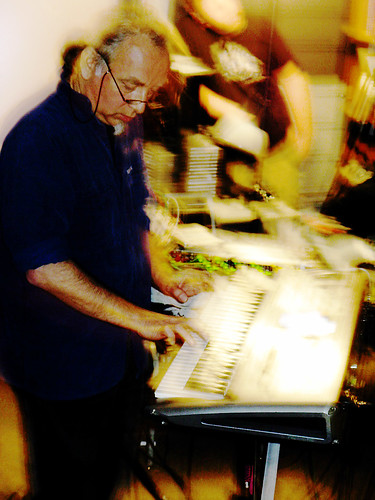What’s This Called?
KPSU Portland College Radio
Special in-studio performance by The Silverman and Soriah.
Hour 1- various songs by Soriah, The Silverman and The Legendary Pink Dots
- 7th track of Blank for your Own Message- The Silverman
- Oceans Blue- The Legendary Pink Dots
- Esqueleto de ChapulÃn- Soriah
- New Eden- The Tear Garden
- Doll’s House- Legendary Pink Dots
- Delayed Chemistry- Martijn De Kleer
Hour 2- performance by The Silverman with Soriah + interview.
- Circle The Sun And You Become One- live performance
- Peace of Mind- LPD
- Interview with The Silverman- live
- And Even the Vegetables Screamed- LPD
- Mailman- LPD
- improvisation- live performance
- The Equalizer- LPD
- improvisation- live performance
“A VERY, very special What’s This Called? for Saturday, November 22nd, 2008 finds your host Ricardo Wang joined in the KPSU studio by none other than Phil Knight AKA The Silverman, keyboardist and electronics programmer for The Legendary Pink Dots! Plus special guests!”
Tune in for a special two hour program from Noon to 2 PM Pacific Time (that’s 9-11 PM back at Phil’s home in Holland!) for a live in studio with this musical experimenter of mythic proportions. Playing live, interviewing, and sharing rare tracks off of his personal ipod! Chris McBeth of The Silverman’s record label Beta-lactam Ring Records will also be in attendance, so the 2 hours will likely evaporate quickly.
As always we’ll be STREAMING LIVE RIGHT HERE! http://www.kpsu.org/ or on the radio in the Portland vicinity via:
1450 AM for the Portland OR/Vancouver WA metro area
98.1 FM on the Portland State University campus
Be sure not to miss what will be perhaps the biggest live in studio performance ever in the 13+ year history of What’s This Called?”



